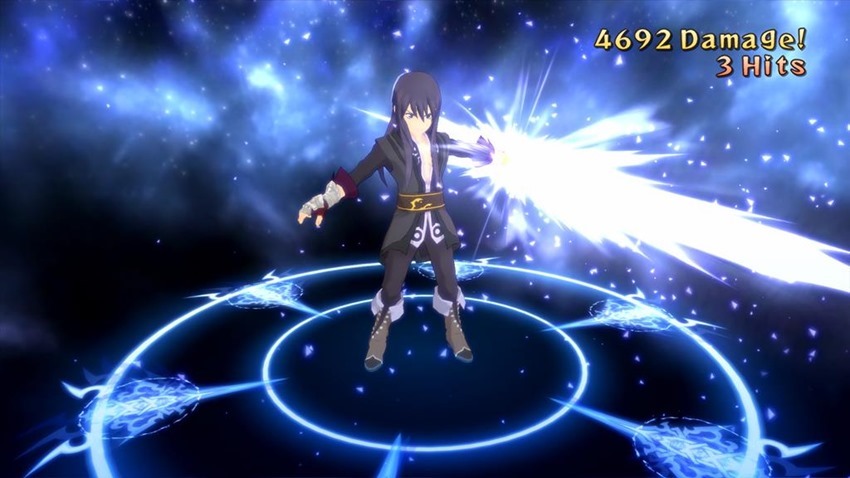
While I’ve always been more of a Final Fantasy guy, Tales of holds a special place in my heart. I fell in love with its action battle system with Tales of Destiny and Phantasia. Ever since I’ve always looked forward to seeing how they evolve the combat and gameplay. Over ten years ago Tales of Vesperia released on the Xbox 360 and looking back now it was probably the peak the series. Having played every single game since (even that crappy mobile game that Bandai Namco gave up on) and playing the Definitive Edition now brought me to the sad realization that the series hasn’t seen a truly quality title like this in over a decade. While Tales of Zestiria almost made me write off the franchise completely, Vesperia is a great reminder of why I fell in love with these games and the Definitive Edition adds just enough to make it feel fresh.
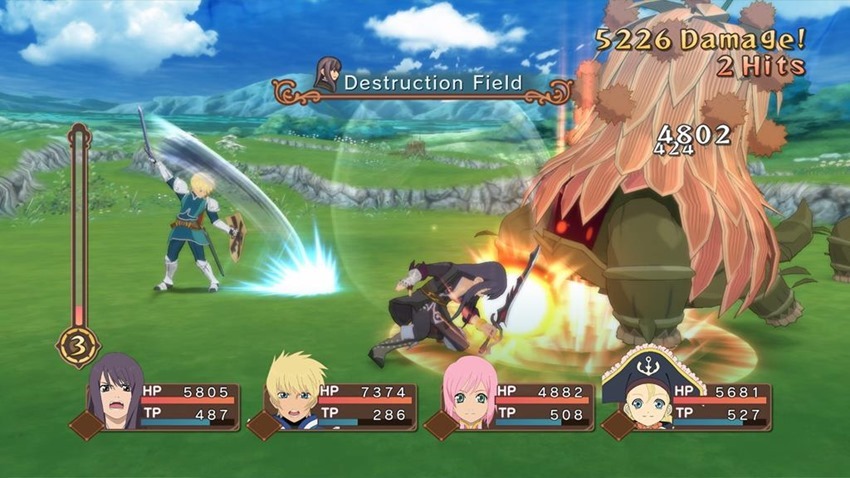
Tales of Vesperia takes place in a world where modern societies rely on an ancient technology called Blastia in their everyday life. Blastia is also most importantly used as a means to protect towns and cities from the growing monster threat. You take on the role of the ex-knight, Yuri Lowentha-I mean, Lowell as he chases after a thief who stole his town’s Aqua Blastia which regulates the flow of water. A simple objective that ultimately gets him tangled up in a quest to save the world.
While the story itself is pretty standard JRPG affair, Tales of Vesperia somehow manages to turn a tried and tested formula into something truly engaging and fun. As you follow Yuri’s quest, numerous other characters will be added to your party, each with their own motives and reasons for journeying out into the wild. It’s not a grand tale about saving the world, well, not at the start in any case. While it eventually evolves into the usual heroics, it takes its time to really build up the characters and create a synergy within the party that makes it feel like these were really just a bunch of strangers who eventually became friends where each individual’s goals and aspirations are as important as saving the world. The cast of characters together as a whole is great but it’s no doubt held together by a fantastic protagonist.
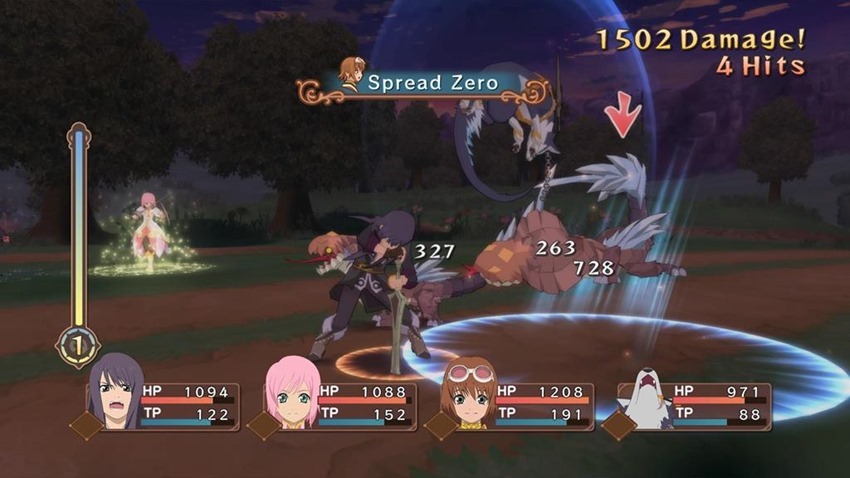
Yuri doesn’t fit the mould of the usual JRPG protagonist. He’s not some wide-eyed spikey-haired kid who believes that the power of friendship will always defeat evil nor is the emo recluse who is too cool to ride the airship. Yuri feels believable and actually acts like a normal human being. His values aren’t as clear cut as you might think and he does some morally questionable things throughout the game. While a lot of JRPGs like to allude to characters having a bit of a darker side, Tales of Vesperia actively shows you what Yuri does and it’s so refreshing to see a JRPG that’s unafraid to paint its protagonist in such a light. Yet he acts like a proper leader within the group, never outshining anyone really, but always acting as the centrepiece to tie everything together. There’s a reason why he’s always ranked high or at number one in popularity polls amongst fans, he’s really just that awesome of a character.
Outside of the story it’s typical JRPG shenanigans. You run around on a big world map, visiting towns and exploring dungeons until you get a boat and eventually an airship. It does little to shake up the formula but its world design and art direction make up for its lack of innovation. This is by far one of, if not the best looking Tales game. Even after all these years the vibrant style and interesting locations are some of the best the series has seen. From its huge cities to quint little towns, each area feels alive and brimming with personality. It’s something I’ve missed dearly from the newer games as after it adopted the engine that powered Xillia, it’s been nothing but bland open areas and copy pasted towns. Thank God for the free DLC with this edition too as this grants you the Winged Boots, a key item that increases your normal running speed. It’s available as soon as you start the game which makes exploration so much more enjoyable. There’s also free costumes that were only available in the PS3 version which is a nice touch for returning players.
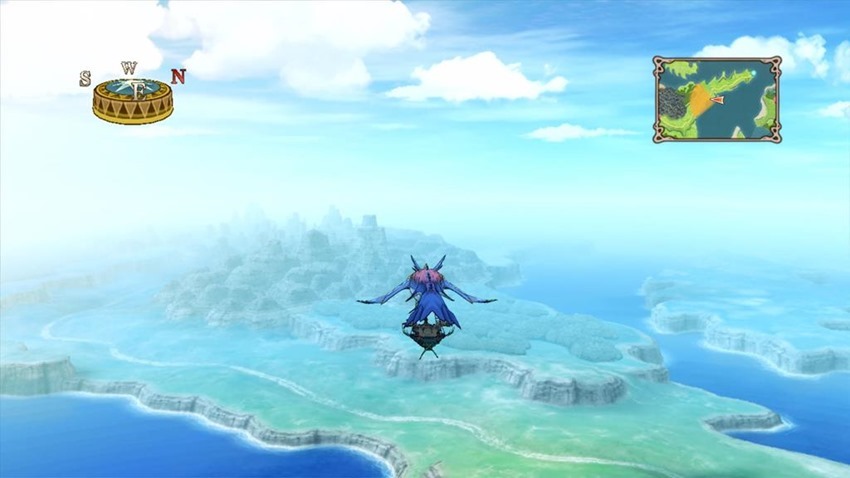
Over the years Tales of games have evolved tremendously from its 2D battle system days. Xillia had the Link system while the latest entry allowed you to assign skills and combo chains to all buttons. While the foundation of combat is still the same, the systems on top of it always changed. Yet, Tales of Vesperia features probably the simplest battle system of modern Tales of games. As usual you can assign skills to shortcuts for ease of use during combat, and you can do normal attacks plus special skills combos. There’s also something called Fatal Strikes which is an instant death (or high damage in the case of boss battles) attack that you can pull off after wearing the enemy down as well as the Over Limit system which allows your character to pull off infinite combos for a limited time once a special meter fills up. While there are nuances to these systems, that’s about it really and I kind of appreciate its simplicity. Having played so many Tales of games it’s refreshing to have an almost back to the basics experience as it allows you to enjoy the core combat without having to micromanage a myriad of sub-systems.

Outside of combat you can customize your characters by learning new skills from the weapons you equip. Much like Final Fantasy IX, you learn a whole bunch of skills, both active and passive, that you can play around with to kind of give you that custom character build feeling. It’s a simple yet effective method of making each weapon feel meaningful while always giving you something to work towards. You can synthesize new and stronger weapons too so the attached skills make it much more enticing to actively seek out the necessary ingredients to make them. While the Title system in Tales of Graces will always be my favorite, this one is still satisfying in its own right.
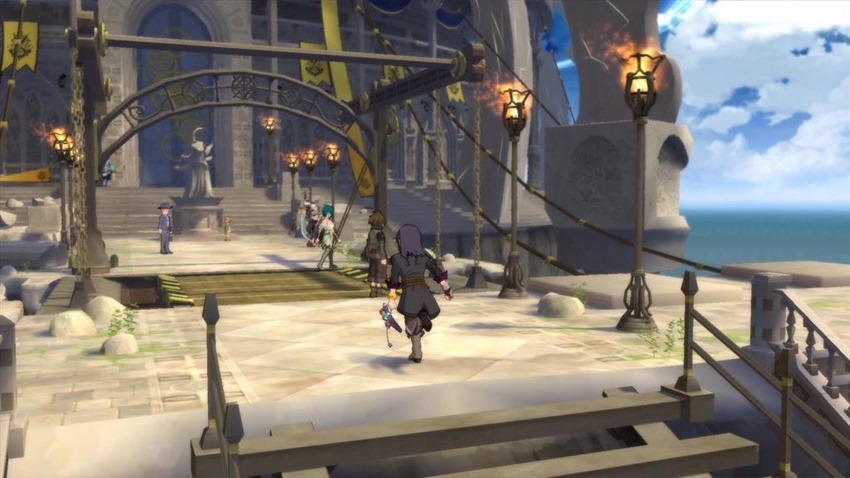
The definitive edition bolsters what is an already gorgeous looking game. While it’s obvious that this was a last gen game just by looking at the texture quality and animations, the art style alone is enough to mask the slightly outdated graphics. Aside from the visual enhancements there’s also a huge amount of new content in this version, from additional party members, added story, side-missions, locations and bosses. There is a ton here for returning players and it really makes the trip back worthwhile.
I really enjoyed my time revisiting this game and it only further solidifies its place as one of the best JRPGs of last generation. I love feeling positive about Tales of games again and even though I enjoyed some of the titles that came after this, I hope that this series’ eventual return will be of this calibre.
Last Updated: February 7, 2019
| Tales of Vesperia Definitive Edition | |
|
Tales of Vesperia stands as one of the best entries in the long-running franchise. Any issues I may have are minor compared to everything this game gets right. The Definitive Edition will be a treat for both returning players and newcomers alike.
|
|
|---|---|
| Tales of Vesperia Definitive Edition was reviewed on PlayStation 4 | |
|
81 /
100
| |






















BradeLunner
February 7, 2019 at 16:58
9! Woah!